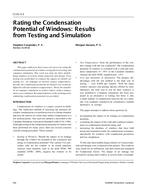Click here to purchase
In EU almost 40% of the final energy use is consumed by the building sector. For this reason, pushing towards high energy performing buildings can be one of the best solutions to address the next target of 40% emission reduction by 2030 (Paris Agreement). The increasing demand for new high energy-efficient buildings and the deep energy retrofit on the existing building stock has determined a growing interest in advanced building envelope materials. These materials (i.e. Super Insulating Materials, Advanced Thermal Plasters, Phase Change Materials, Low Emittance Materials and high reflective coatings) are characterised by very high thermal performance even if applied in thin layers. This feature makes them attractive since they seem to be particularly suitable for all the cases in which, for several reasons, usual insulation techniques cannot be easily applied, (i.e. space-saving, critical nodes, technological and historical compatibility, etc.) Unfortunately, the building sector is a conservative market, and as a consequence, despite the great potentials of advanced materials, they are still poorly adopted, because of the high costs, and the lack of knowledge and data about their actual thermal behaviour. Starting from the research experiences of the Authors on this field, the presented study aims at increasing the knowledge on the topic by reviewing the emerging and most promising advanced materials and their application in the building sector.
Citation: Thermal Buildings XIV 2019
Product Details
- Published:
- 2019
- Number of Pages:
- 8
- Units of Measure:
- Dual
- File Size:
- 1 file , 1.4 MB
- Product Code(s):
- D-Bldgs19-009


